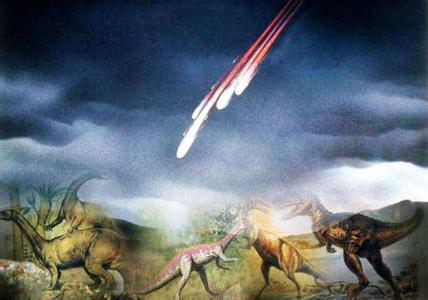You'd think that the asteroid that hit Earth 66 million years ago with enough force to wipe out the dinosaurs would be tough to sleep through. But a new study suggests that the ability to engage in extended hibernation might be what saved ancestral mammals from extinction at the end of the Cretaceous. The hypothesis is in the Proceedings of the Royal Society (B).
你可能會認為6600萬年前,當小行星用足夠毀滅恐龍的力量來撞擊地球時,哺乳動物不可能還沉浸在睡夢中。但一項新的研究顯示,哺乳動物祖先的超期休眠能力可能正是使他們免于白堊紀末期遭受滅絕的原因。這一假說發表在《英國皇家學會學報B》。
It's thought that global wildfires engulfed the planet for a year or more after the Chicxulub impact. That's a long time to stay out of harm's way. Small mammals most likely burrowed underground.
人們普遍認為,希克蘇魯伯隕石撞擊地球后,地球上發生了長達一年或更長時間的全球性火災。這就要求長期待在安全地帶了。小型哺乳動物很可能潛藏在地底。

But could they last that long without coming up for air? Yes—if they were hibernating.
經過那么長的時間,它們可能不上來透口氣嗎?答案是肯定的——它們可能在休眠。
We know that bears can sleep through winter. But rabbit-sized Madagascar mammals called tenrecs have got that beat. Researchers tagged two dozen tenrecs with devices that recorded their body temp. And then released them back in the wild.
我們知道,熊可以睡上一整個冬天。但兔子大小的馬達加斯加無尾猬的休眠時間又更勝一籌。科學家們捕獲了24只無尾猬,用設備記錄下它們的體溫,然后將它們放回大自然。
Most of the tenrecs got killed by dogs or snakes or poachers. But a couple tunneled into the sand where they proceeded to snooze until the researchers dug them up nine months later.
大多數的無尾猬不是被狗或蛇咬死,就是被偷獵者殺死的。有對無尾猬在沙子里打了個洞,然后開始休眠,直至9個月后科學家將它們挖出。
The findings reveal that on occasion the best way to make it through a crisis is to just take a long nap.
該研究顯示,有時,躲過災難的最好方式就是睡個長覺。











